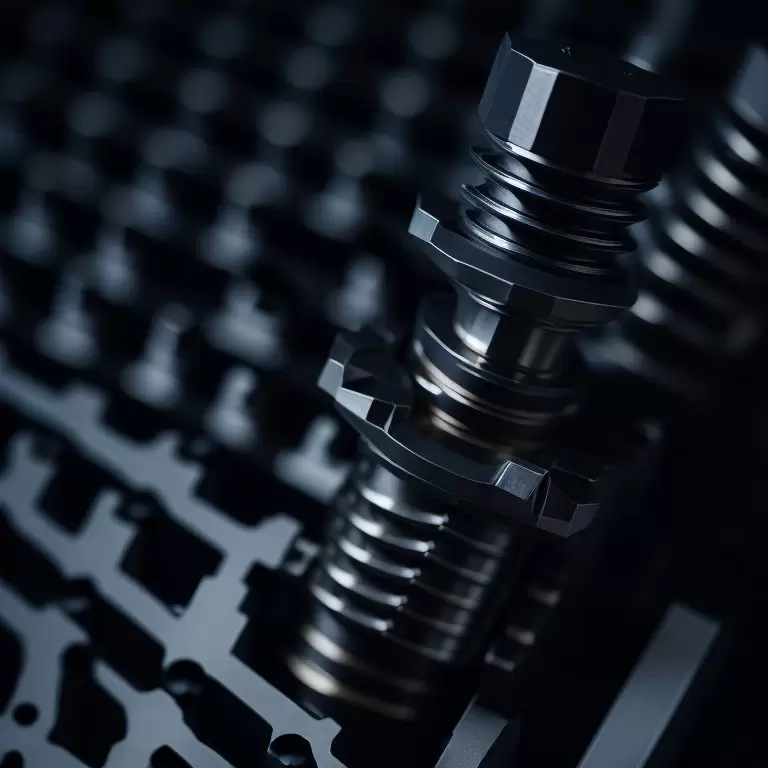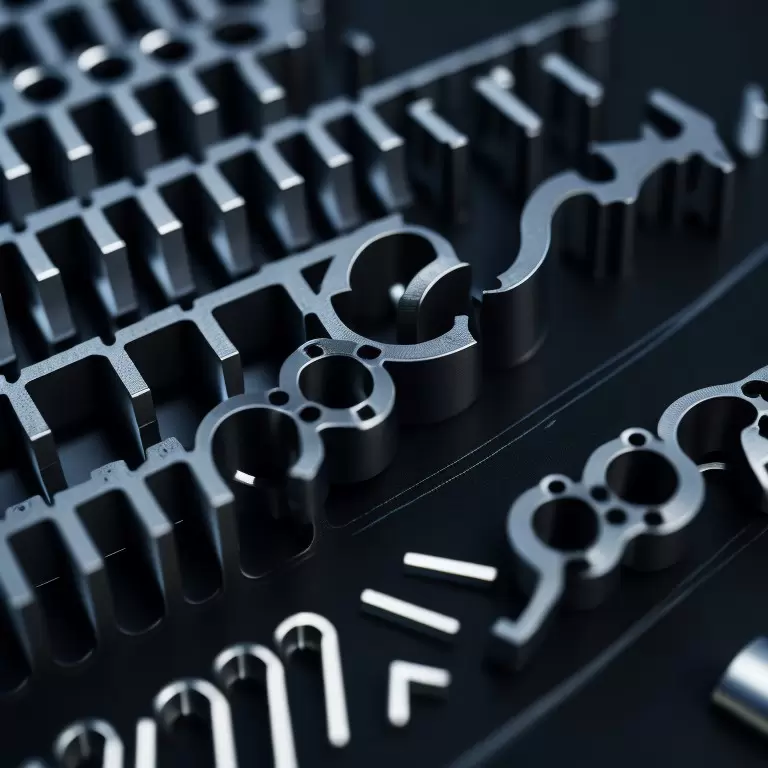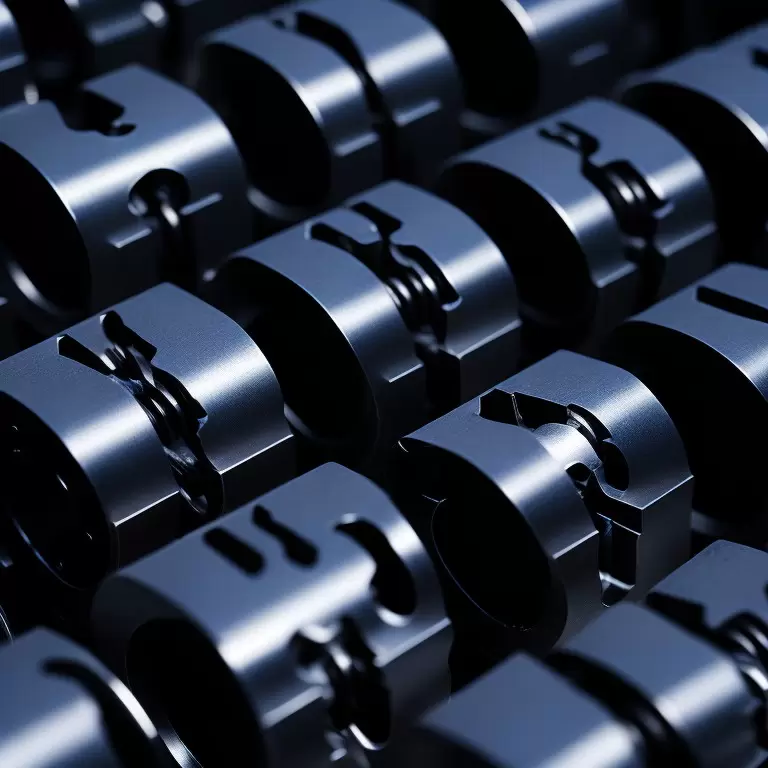Table of Contents:
- Introduction
- Swiss Machining Techniques
- Advantages of Swiss Machining
- Applications of Swiss Machining
- Best Practices for Swiss Machining
- Conclusion
-
1.Introduction
Swiss machining is a type of precision machining that is widely used in the manufacturing industry for producing complex and high-precision parts. It is a specialized technique that is ideal for producing small parts with intricate geometries and tight tolerances. The technique gets its name from its origins in Switzerland, where it was first developed in the late 1800s to produce precise watch components.
Over time, Swiss machining has evolved and improved, with modern machines featuring advanced technology and automation that allow for even greater precision and efficiency. Today, Swiss machining is used in a variety of industries, including medical device manufacturing, aerospace, automotive, and electronics.
In this guide, we will explore the basics of Swiss machining, including its techniques, advantages, and applications. We will also discuss the historical development of Swiss machining and how it has evolved over time to become an essential part of modern manufacturing.
-
2.Swiss Machining Techniques
- Definition of Swiss machining:
Swiss machining is a precision machining process that is used to produce high-precision parts with tight tolerances and complex geometries. The technique involves the use of a specialized lathe machine called a Swiss lathe, or Swiss screw machine, which rotates the workpiece while cutting tools remove material from the workpiece. Swiss machining is capable of producing parts with diameters as small as 0.2mm and with tolerances as tight as ±0.001mm.
- Basic principles of Swiss machining:
The basic principle of Swiss machining is that the workpiece is held in place by a guide bushing that supports the material as it is machined. This allows the cutting tools to move closer to the workpiece, reducing deflection and enabling high-precision cutting. The Swiss lathe uses a sliding headstock to move the workpiece along the guide bushing, while the cutting tools are mounted on a separate tool holder that moves independently of the workpiece.
- Differences between Swiss machining and traditional machining:
Swiss machining differs from traditional machining in several ways. First, the guide bushing used in Swiss machining provides additional support for the workpiece, which reduces vibration and increases accuracy. Additionally, Swiss machining uses a sliding headstock that moves the workpiece, rather than a stationary spindle. This allows for longer and thinner workpieces to be machined with greater precision. Finally, Swiss machines are designed to be highly automated, with advanced features such as CNC controls and robotic loading and unloading systems.
- Types of Swiss machines:
There are several types of Swiss machines, including sliding headstock machines, fixed headstock machines, and hybrid machines that combine elements of both. Sliding headstock machines are the most common type and are used for machining small parts with long lengths. Fixed headstock machines are used for larger parts that require greater rigidity and stability during machining. Hybrid machines combine the advantages of both types of machines and are becoming increasingly popular in the industry.
- Key components of Swiss machines:
The key components of a Swiss machine include the guide bushing, sliding headstock, cutting tools, and tool holders. The guide bushing provides support for the workpiece and ensures that it remains centered during machining. The sliding headstock moves the workpiece along the guide bushing, while the cutting tools remove material from the workpiece. The tool holders hold the cutting tools and move them into position to perform the machining operations. Other components of Swiss machines include coolant systems, bar feeders, and chip conveyors.

-
3.Advantages of Swiss Machining
Swiss machining offers a number of advantages over traditional machining techniques, making it a popular choice for producing high-precision parts. Here are some of the main advantages of Swiss machining:
- Precision and accuracy:
Swiss machining is capable of producing extremely precise and accurate parts with tight tolerances. The use of a guide bushing provides additional support for the workpiece, reducing deflection and ensuring that the part remains centered during machining. This results in parts with excellent surface finishes and dimensional accuracy. - High speed and efficiency:
Swiss machining is a highly efficient process that is capable of producing parts at high speeds. The sliding headstock and independent tool holders allow for fast and continuous machining, reducing cycle times and increasing productivity. - Reduced waste and material usage:
Swiss machining is a very efficient process that generates minimal waste. The use of a guide bushing ensures that material is only removed from the specific area being machined, reducing waste and material usage. - Capabilities for complex geometries:
Swiss machining is particularly well-suited for producing parts with complex geometries, such as those with multiple diameters or intricate shapes. The independent tool holders and sliding headstock allow for multiple cutting tools to be used simultaneously, enabling the production of complex parts in a single setup. - Cost-effectiveness:
Although Swiss machines are typically more expensive than traditional lathes, they offer a number of cost-saving benefits. The high speed and efficiency of Swiss machining result in lower labor costs and shorter cycle times, while the reduced waste and material usage reduce material costs. Additionally, the precision and accuracy of Swiss machining reduce the need for secondary operations, further reducing costs.
-
4.Applications of Swiss Machining
Swiss machining is a versatile manufacturing process that is used in a variety of industries to produce high-precision parts. Here are some of the main applications of Swiss machining:
- Medical device manufacturing:
Swiss machining is widely used in the medical device industry to produce small and complex parts, such as surgical instruments, implants, and catheter components. The precision and accuracy of Swiss machining are particularly important in the medical industry, where the parts must meet strict quality standards and tolerances. - Aerospace and defense industries:
Swiss machining is used in the aerospace and defense industries to produce high-precision parts for aircraft, missiles, and other aerospace applications. The process is particularly well-suited for producing small and complex parts that are used in critical components, such as fuel injection systems and landing gear. - Automotive industry:
Swiss machining is used in the automotive industry to produce a variety of components, including engine and transmission parts, fuel injectors, and sensors. The high precision and accuracy of Swiss machining make it well-suited for producing parts that require tight tolerances and complex geometries. - Electronics and telecommunications industry:
Swiss machining is used in the electronics and telecommunications industry to produce small and complex components, such as connectors, pins, and terminals. The process is particularly useful for producing components with fine features and intricate shapes. - Other industries and applications:
Swiss machining is also used in other industries, such as the watchmaking industry, where it originated, and the jewelry industry. It is also used to produce parts for firearms, musical instruments, and other precision applications where high accuracy and precision are required.
-
5.Best Practices for Swiss Machining
To achieve optimal results in Swiss machining, it is important to follow best practices that help ensure consistent quality, efficiency, and safety. Here are some of the key best practices for Swiss machining:
- Tool selection and maintenance:
Selecting the right tools and maintaining them properly is critical for achieving optimal performance in Swiss machining. The right tools should be chosen based on factors such as the material being machined, the desired surface finish, and the required tolerances. Regular maintenance, such as sharpening and replacing worn tools, can help ensure consistent performance and minimize tool breakage. - Material considerations:
The choice of material can have a significant impact on the performance and efficiency of Swiss machining. Factors to consider include the hardness and toughness of the material, as well as its thermal conductivity and machinability. Proper selection of cutting tools, cutting parameters, and lubrication can help optimize performance and reduce tool wear. - Quality control and inspection:
Quality control and inspection are critical for ensuring that parts meet the required specifications and tolerances. Regular inspection and testing throughout the machining process can help identify and correct any issues before they affect the final product. It is also important to have a well-documented quality management system in place to ensure consistency and traceability. - Optimization of cutting parameters:
Optimizing cutting parameters such as cutting speed, feed rate, and depth of cut can help maximize efficiency and productivity while minimizing tool wear and material waste. This requires a thorough understanding of the material being machined and the capabilities of the machine and cutting tools. - Safety considerations:
Swiss machining involves the use of high-speed rotating machinery and sharp cutting tools, making safety a top priority. Proper training and adherence to safety protocols, such as wearing personal protective equipment and following lockout/tagout procedures, can help prevent accidents and injuries. Regular machine maintenance and inspections can also help identify and correct any potential safety hazards.
In addition to the above practices, you can choose V1 Machining.V1 Machining is a China top CNC machining company that is specialized in CNC services and precision hardware production for decades of years, and have the capability to provide Swiss CNC machining services with the latest Swiss turning and machining technology for the manufacturing needs of various industries all over the world. With advanced Swiss lathe and Swiss machines, as well as other manufacturing facilities, our seasoned experts and technicians can give you the most cost-effective solutions and produce the highest quality Swiss machined parts based on the industry standards and customer requirements. From 5 axis milling service to CNC Swiss machining services, from Swiss CNC turning to wire EDM, no matter what type of CNC components you call for, our team will help you to approach the standard.

-
6.Conclusion
In conclusion, Swiss machining is a highly precise and efficient manufacturing process that is widely used in a variety of industries to produce complex and small parts with tight tolerances. This process involves the use of specialized machines and tools that are designed to hold and feed the material through a guide bushing, allowing for precise and consistent machining.
The advantages of Swiss machining include high precision and accuracy, high speed and efficiency, reduced waste and material usage, and the ability to produce complex geometries. These advantages make it an ideal choice for industries such as medical devices, aerospace, automotive, electronics, and telecommunications.
Looking to the future, Swiss machining is poised to continue to grow and evolve. With advances in technology, such as automation and artificial intelligence, Swiss machining is becoming more efficient, reliable, and cost-effective. As a result, it has the potential to transform the way many industries manufacture parts and components, leading to greater innovation and competitiveness.
Overall, Swiss machining is a highly effective and versatile manufacturing process that has a bright future in a wide range of industries. By following best practices for tool selection and maintenance, material considerations, quality control and inspection, optimization of cutting parameters, and safety considerations, manufacturers can achieve optimal results and realize the full potential of Swiss machining.













